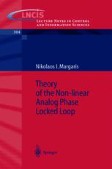Search
Search Results
-
Adaptive and Distributed Coordination Algorithms for Mobile Sensing Networks
Consider n sites evolving within a convex polygon according to one of the following interaction laws: (i) each site moves away from the closest other...
-
Control of Communication Networks Using Infinitesimal Perturbation Analysis of Stochastic Fluid Models
Managing and operating large scale communication networks is a challenging task and it is only expected to get worse as networks grow larger. The...
-
Robust Controller Design for AQM and $\mathcal{H}^{\infty}$ -Performance Analysis
Active Queue Management (AQM) has recently been proposed in [1] to support the end-to-end congestion control for TCP traffic regulation on the...
-
An Introduction to Nonlinear Fault Diagnosis with an Application to a Congested Internet Router
We aim at extending a recent linear theory on fault diagnosis [8, 9] to nonlinear systems by utilising, like Staroswiecki et al. [39], and Diop et...
-
Flocking in Teams of Nonholonomic Agents
The motion of a group of nonholonomic mobile agents is synchronized using local control laws. This synchronization strategy is inspired by the early...
-
Position and Force Tracking in Bilateral Teleoperation
A teleoperator is a dual robot system in which a remote slave robot tracks the motion of a master robot, which is, in turn, commanded by a human...
-
1 Introduction
The class of block-oriented nonlinear models includes complex models which are composed of linear dynamic systems and nonlinear static elements....
-
On the Optimization of Load Balancing in Distributed Networks in the Presence of Delay
Distributing the total computational load across available processors is referred to as load balancing in the literature. A typical distributed...
-
State-Space Models for Control and Identification
In the last two decades, design and performance evaluation of efficient congestion control methods for packet-switching computer communication...
-
6 The Modified Taught Data Method
In order to realize the movement of an industrial robot, the given objective trajectory is always used without any change when their coordinate...
-
Optimal Control of Differential-Algebraic Inclusions
In this paper we consider the following dynamic optimization problem ( P ) governed by differential-algebraic inclusions:...
-
A Continuous Control Mechanism for Uncertain Nonlinear Systems
The control of uncertain nonlinear systems is a topic that continues to challenge control theoreticians. This topic is also of practical importance...
-
On Impulses Induced by Singular Perturbations
The possibility that a singularly perturbed controlled dynamics generates impulses in a slow dynamics coupled to it, is investigated. A scheme for...
-
10. Main sychronization
It was made clear in Chapter 9 that the second order type-II loop operates either in saturated or in unsaturated mode. In this chapter, only the main...
-
4. Main synchronization
In this chapter the main synchronization of the first order PLL is discussed. At first, we perform the local stability analysis of the main...
-
8. Main synchronization
In the present chapter the main synchronization of the second order type-I loop is treated. At first, the local stability analysis is presented and...
-
15. SIMULATION STUDIES AND REAL-TIME CONTROL USING MATLAB/SIMULINK
The MATLAB programs for simulating the generalized minimum variance (GMV) controller with the CE assumption as well as its dual version are presented...
-
13. ROBUSTNESS AGAINST UNMODELED EFFECTS AND SYSTEM STABILITY
Various engineering systems are described by complex dynamic models that include nonlinearities, time-varying parameters and high-order terms....
-
6. DUAL POLE-PLACEMENT CONTROLLER WITH DIRECT ADAPTATION
The following two problems have to be solved in order to extend the adaptive dual control approach to direct adaptive pole-placement control systems:...
-
9. A SIMPLIFIED APPROACH TO THE SYNTHESIS OF DUAL CONTROLLERS WITH INDIRECT ADAPTATION
The cost function of the deviation between the system output and its nominal value (system response to the unknown desired controller), suggested by...
